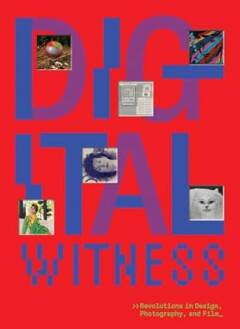
Je cadeautjes zeker op tijd in huis hebben voor de feestdagen? Kom langs in onze winkels en vind het perfecte geschenk!
- Afhalen na 1 uur in een winkel met voorraad
- Gratis thuislevering in België vanaf € 30
- Ruim aanbod met 7 miljoen producten
Je cadeautjes zeker op tijd in huis hebben voor de feestdagen? Kom langs in onze winkels en vind het perfecte geschenk!
- Afhalen na 1 uur in een winkel met voorraad
- Gratis thuislevering in België vanaf € 30
- Ruim aanbod met 7 miljoen producten
Zoeken
Digital Witness: Revolutions in Design, Photography, and Film
Revolutions in Design, Photography, and Film
Britt Salvesen, Staci Steinberger, Michael Govan
Hardcover | Engels
€ 90,45
+ 180 punten
Omschrijving
An essential primer on the history of Photoshop and other tools of digital image manipulation, from the 1970s through to the current day
Published with Los Angeles County Museum of Art.
This timely volume, Digital Witness, examines the impact of Photoshop and other tools of digital manipulation, tracing simultaneous developments in photography, graphic design and visual effects over roughly five decades.Beginning in the 1970s and 1980s, advances in computer science and engineering made it possible to design, build and run raster graphics programs, while developments in graphical user interfaces allowed artists and designers to directly create and edit images. At the same time, these nascent technologies led to concerns about authorship, automation and the viability of the businesses that supported various creative industries. During the 1990s, following the release of Photoshop, image-editing software rose to widespread use in multiple fields. As digitally altered imagery has permeated popular culture, aesthetic and ethical debates have played out in mass media, politics, advertising and even the judicial system.
Examining the relationship between software development and artistic practice, Digital Witness explores how artists and engineers responded to each others' innovations. Each new version of Photoshop allowed for increasingly sophisticated edits, from tracing intricate paths to layers to editable type. Some artists found creative potential in these advances, taking analog art forms such as collage to digitally enabled extremes. Others resisted the growing dependence on mainstream commercial software, developing open-source alternatives.
Published in conjunction with the landmark PST ART exhibition at the Los Angeles County Museum of Art, this substantial, image-packed volume includes Q&As with noted visual artists, filmmakers and designers such as Copper Frances Giloth, Raqi Syed and April Greiman.
Specificaties
Betrokkenen
- Auteur(s):
- Uitgeverij:
Inhoud
- Aantal bladzijden:
- 256
- Taal:
- Engels
Eigenschappen
- Productcode (EAN):
- 9781636811338
- Verschijningsdatum:
- 19/11/2024
- Uitvoering:
- Hardcover
- Formaat:
- Genaaid
- Afmetingen:
- 231 mm x 310 mm
- Gewicht:
- 1759 g

Alleen bij Standaard Boekhandel
+ 180 punten op je klantenkaart van Standaard Boekhandel
Beoordelingen
We publiceren alleen reviews die voldoen aan de voorwaarden voor reviews. Bekijk onze voorwaarden voor reviews.









